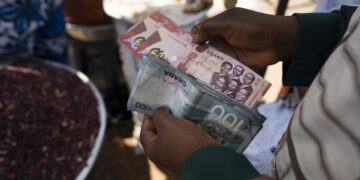ACEP Report to Expose GHS 8 Billion Annual Diversion From Downstream Sector to Private Individuals
Executive Director of the Africa Centre for Energy Policy (ACEP), Ben Boakye, has said the Think Tank will in the coming weeks come out with a report on how some GHS 8 billion are channeled from the citizenry into the pockets of private individuals.
Making the disclosure during a discussion on TV3’s KeyPoints, Mr Boakye quipped the report will reveal the “mess” the country’s downstream energy sector is currently in.
“We have a report that will be coming out in the next week or two, on the mess in the downstream sector which takes close to GHS 8 billion out of the pockets of Ghanaians every year just to reward the system rather than optimize it,” he stated.
“The IMF usually complains that our tax revenue to GDP is low, but these margins in the downstream sector are stealing monies from the people and not being accounted for, and so we need to optimize the sector and make sure that we are able to generate enough revenue from the downstream sector rather than diverting those revenues into private pockets,” he added.
The forthcoming report is expected to delve deeper into these issues, offering detailed insights and recommendations for reforms.
The report’s release is anticipated to spark critical discussions on addressing leakages and inefficiencies in Ghana’s downstream energy sector while ensuring greater accountability and sustainability.
Speaking further, Mr Boakye highlighted the inefficiencies in the power sector which is costing the country billions of dollars.
The Executive Director of ACEP in a synopsis of the debt stock in the country’s energy sector published earlier on norvanreports, stated the following:
1. It’s true that the energy sector’s debt stood at $2.5 billion in 2017. This includes debt from the downstream petroleum sector, TOR’s debt, and the power sector.
2. ESLA was established to address this legacy energy sector debt, with a five-year sunset. This meant the sector’s debt was expected to be amortized by 2020.
3. However, the ESLA plan was derailed with the creation of ESLA PLC, which shifted the negotiated debt from the original owners to the bond market. This made it impossible for ESLA proceeds to cover coupon payments and principal servicing. ESLA PLC also took on payments for recurring debt rather than tackling legacy debt.
4. In 2019, the World Bank and the government projected that energy sector underrecoveries could reach $12.5 billion—up from $2.7 billion—if the sector continued to be managed the same way, particularly due to power sector underrecoveries (the downstream sector had already been deregulated, so no underrecoveries were expected there).
5. The primary objective of the Energy Sector Recovery Programme (ESRP) was to bring the sector into balance by 2023, where revenue would match payment requirements, without accumulating further debt.
6. It’s striking when the President claims his government averted the projected $12.5 billion in underrecoveries by 2023. The reality is that, by 2023, the projection had been revised to $14.5 billion, despite some claims of success by the World Bank to feel good about its failed Programme.









Bulletins for Acep
great
wanton corruption
Ghjj
Very helpful to know the extent of the energy sector burden on the macroeconimic stabilzation.